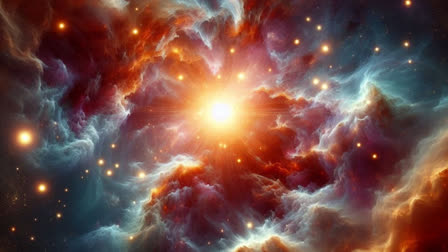Hyderabad:Scientists are in agreement that the Sun formed about 4.6 billion years ago from a molecular cloud of gas and dust, the duration of its formation was less clear. However, a new study published in the journal Naturesuggests that the Sun took between 10 and 20 million years to form.
The estimate is based on the study of stardust left behind from the early solar system, led by TRIUMF PhD candidate Guy Leckenby and an international team. The findings were made using tools developed by Monash University astrophysicists led by Associate Professor Amanda Karakas, who explained that stellar evolution models help scientists calculate changes in chemical composition as stars age due to nuclear reactions.
These models allow researchers to identify which elements stars produce and how these elements are expelled into the galaxy, she added.
The study was initiated by observing the rare decay of highly-charged thallium at the GSI Helmholtz Centre in Germany. Dr Lugaro and Szanyi collaborated with Dr Karakas on stellar evolution models, with Szanyi performing the necessary calculations. To estimate the Sun's formation time, they analysed levels of radioactive lead in stars, using Monash models of ageing red giant stars and recent nuclear physics research.
Ageing red giant stars produce a unique radioactive isotope of lead, which mixes into gas and dust clouds and begins to decay. Our Sun formed from such a cloud, with early solid fragments trapping this lead, providing a timestamp that helps determine the Sun's formation time.
Dr Karakas is optimistic about the future impact of her stellar evolution models on astrophysics. She highlights that previous nuclear physics data limited accurate predictions of radioactive lead production rates, making this a significant advancement. These findings enhance the tool's accuracy for dating rock and nuclear samples in meteorites and pave the way for further discoveries about the elements in our universe, the origins of planets, and the formation of other solar systems.
